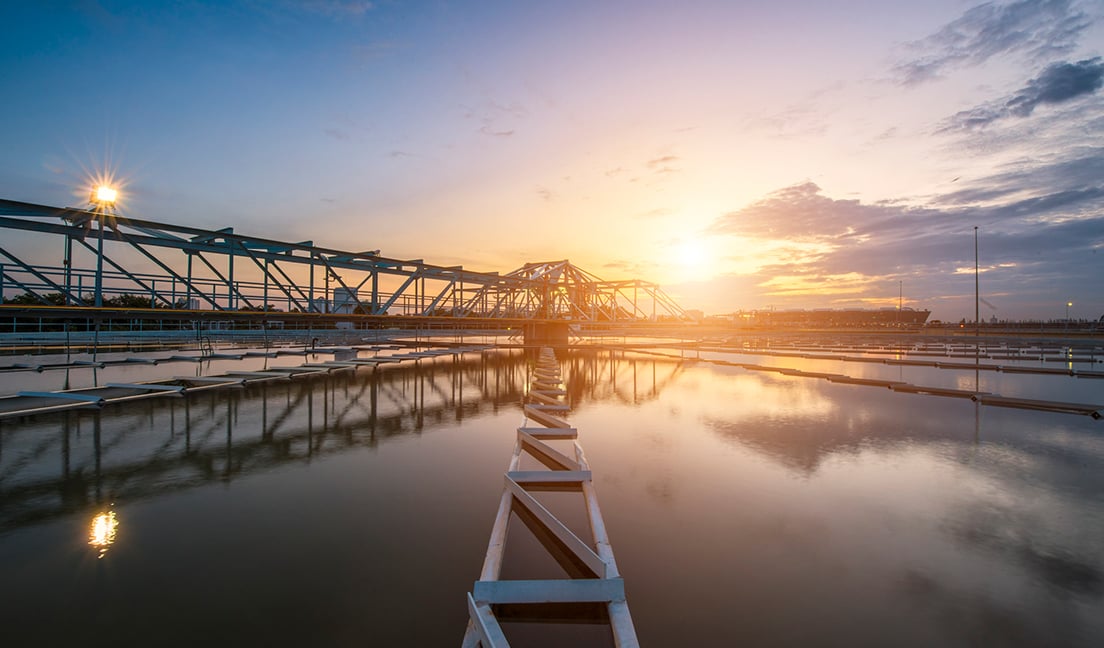As water and wastewater treatment plants look for innovative solutions to face the ongoing challenges of reducing operating costs, increasing operational efficiency and maintaining safety levels, disinfection systems are one area not to be overlooked. Here, James Lester, regional sales manager at Evoqua Water Technologies discusses onsite chemical generation for complete disinfection system supply and the benefits this offers plant operators.
With increasing costs of chemicals, tightening environmental legislation and economic pressures to navigate, the wider benefits – beyond functionality alone – of operational technologies are more important than ever. Onsite chemical generation is an excellent example of this.
When talking about onsite chemical generation we are referring to electrochlorination. This is a system for producing sodium hypochlorite on site at a water treatment plant, on demand through the electrolysis of a brine solution. Systems can generate from 2.4 to 960 kgs of equivalent chlorine per day to disinfect drinking or wastewater, with salt, water and electricity.
A common alternative to electrochlorination is the bulk purchasing and storing of chemicals onsite, such as chlorine solutions. While this option can provide effective disinfection, it carries significant operational and safety risks that the new, enhanced onsite generation technology can solve. On site generation offers the same chemical treatment benefits, but with greater operational efficiencies and cost benefits for treatment plants to consider through a sustainable solution.
First and foremost, onsite chemical generation through electrochlorination increases safety on site as there’s no need for bulk storing chlorine solutions. Operators using onsite generation only need to handle salt, not hypochlorite. There are no chemical safety concerns or considerations which can be costly and burdensome for even the most efficient plants to maintain. Accidental mixing can be one of the most dangerous occurrences with bulk hypochlorite handling, and can be presented completely with On-site generator, as the produced chemical is never handled is daily operation.
Safety considerations aren’t just confined to the water treatment plant alone, but also the local community. Onsite generation reduces the risk of environmental damage from the storage and handling of bulk chemicals and through leaks in pipework, as bulk hypochlorite can cause degradation to pipes through calcium build-up. With no need for chemicals to be transported and delivered to the plant, the risk to the environment is reduced. Removing the need to transport chemicals is also a benefit for sites that have access challenges and can’t accept large deliveries.
When discussing risk in relation to the alternatives to onsite chemical generation, it is not just safety that is a consideration. Onsite generation is a proactive solution that eliminates dependence on commercial chemical suppliers and the risk of lack of supply at any point. It’s therefore a more environmentally friendly and sustainable solution.
As well as safety and operational benefits, onsite chemical generation reduces operating costs, as there is no requirement for bulk chemical purchase. Electrochlorination works with just salt, water and electricity. Hypochlorite is therefore generated onsite at a significantly lower cost than purchased hypochlorite. Furthermore, there is no risk of chemicals degrading in storage and becoming less or completely ineffective, which can be costly for treatment plant operators.
Onsite Generation in Practice
Dŵr Cymru, Welsh Water’s Hirwaun water treatment works is an example of onsite generation in practice. Here, onsite electrochlorination provides valuable sodium hypochlorite solution on demand. Plant operators considered alternative treatment options including bulk purchasing sodium hypochlorite.
One factor in the decision-making process was transport. Hirwaun is a remote site with poor road access. Bringing in chemicals by truck would introduce a potential hazard to the local rural community which Dŵr Cymru Welsh Water felt was unacceptable. Another was that as a small works like Hirwaun uses relatively small quantities of hypochlorite, even if delivered in IBCs, the storage times for the chemical would be long resulting in degradation in strength before it was all used. And, there would be the logistical risk of reliance on a sole chemical supplier.
The solution for Dŵr Cymru Welsh Water was Evoqua’s onsite generation system, the OSEC® system B-Pak 65 EU, producing up to 1.25kg/h of chlorine equivalent at a salt consumption of only about 3kg of salt per kg of chlorine equivalent.
The Future is Here
Importantly, as well as offering safety, environmental and cost benefits, onsite generation technology, including the Evoqua OSEC system is operationally efficient. It is simple to operate, has low maintenance requirements and can be programmed to make use of off-peak power to reduce costs further.
The future of water and wastewater disinfection is sustainable, safe, operationally efficient and cost effective. Onsite chemical generation ticks all of these boxes and there’s no waiting around for the future, proven technology can deliver these benefits for treatment plants today.

